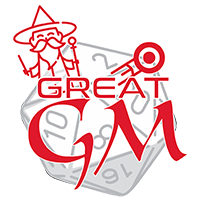Dungeons & Dragons 5e Monster : Ancient Green Dragon
Remove these ads. Join the Worldbuilders Guild
SRD (p.287)
Ancient Green Dragon CR: 22
STR
27 +8
DEX
12 +1
CON
25 +7
INT
20 +5
WIS
17 +3
CHA
19 +4
Amphibious. The dragon can breathe air and water. Legendary Resistance (3/Day). If the dragon fails a saving throw, it can choose to succeed instead.
Actions
Multiattack. The dragon can use its Frightful Presence. It then makes three attacks: one with its bite and two with its claws. Bite. Melee Weapon Attack: +15 to hit, reach 15 ft., one target. Hit: 19 (2d10 + 8) piercing damage plus 10 (3d6) poison damage. Claw. Melee Weapon Attack: +15 to hit, reach 10 ft., one target. Hit: 22 (4d6 + 8) slashing damage. Tail. Melee Weapon Attack: +15 to hit, reach 20 ft., one target. Hit: 17 (2d8 + 8) bludgeoning damage. Frightful Presence. Each creature of the dragon's choice that is within 120 feet of the dragon and aware of it must succeed on a DC 19 Wisdom saving throw or become frightened for 1 minute. A creature can repeat the saving throw at the end of each of its turns, ending the effect on itself on a success. If a creature's saving throw is successful or the effect ends for it, the creature is immune to the dragon's Frightful Presence for the next 24 hours. Poison Breath (Recharge 5–6). The dragon exhales poisonous gas in a 90--foot cone. Each creature in that area must make a DC 22 Constitution saving throw, taking 77 (22d6) poison damage on a failed save, or half as much damage on a successful one.
Legendary Actions
The dragon can take 3 legendary actions, choosing from the options below. Only one legendary action option can be used at a time and only at the end of another creature's turn. The dragon regains spent legendary actions at the start of its turn. Detect. The dragon makes a Wisdom (Perception) check. Tail Attack. The dragon makes a tail attack. Wing Attack (Costs 2 Actions). The dragon beats its wings. Each creature within 15 feet of the dragon must succeed on a DC 23 Dexterity saving throw or take 15 (2d6 + 8) bludgeoning damage and be knocked prone. The dragon can then fly up to half its flying speed.
Lair Actions
On initiative count 20 (losing initiative ties), the dragon takes a lair action to cause one of the following effects; the dragon can’t use the same effect two rounds in a row:
- Grasping roots and vines erupt in a 20-foot radius centered on a point on the ground that the dragon can see within 120 feet of it. That area becomes difficult terrain, and each creature there must succeed on a DC 15 Strength saving throw or be restrained by the roots and vines. A creature can be freed if it or another creature takes an action to make a DC 15 Strength check and succeeds. The roots and vines wilt away when the dragon uses this lair action again or when the dragon dies.
- A wall of tangled brush bristling with thorns springs into existence on a solid surface within 120 feet of the dragon. The wall is up to 60 feet long, 10 feet high, and 5 feet thick, and it blocks line of sight. When the wall appears, each creature in its area must make a DC 15 Dexterity saving throw. A creature that fails the save takes 18 (4d8) piercing damage and is pushed 5 feet out of the wall’s space, appearing on whichever side of the wall it wants. A creature can move through the wall, albeit slowly and painfully. For every 1 foot a creature travels through the wall, it must spend 4 feet of movement. Furthermore, a creature in the wall’s space must make a DC 15 Dexterity saving throw once each round it’s in contact with the wall, taking 18 (4d8) piercing damage on a failed save, or half as much damage on a successful one. Each 10-foot section of wall has AC 5, 15 hit points, vulnerability to fire damage, resistance to bludgeoning and piercing damage, and immunity to psychic damage. The wall sinks back into the ground when the dragon uses this lair action again or when the dragon dies.
- Magical fog billows around one creature the dragon can see within 120 feet of it. The creature must succeed on a DC 15 Wisdom saving throw or be charmed by the dragon until initiative count 20 on the next round.
- Creeper Vines. The dragon can use the vines and roots within its lair to animate up to three Humanoid corpses, which become zombies (see their entry in the Monster Manual). The zombies take their turn immediately after this lair action. Each one reverts to an inanimate corpse after 1 minute, when the dragon uses this lair action again, or when the zombie is destroyed.
- Lashing Root. One large root or branch that is part of the lair makes a melee attack roll against a creature within 10 feet of it. It has a +7 bonus to hit and deals 10 (3d6) bludgeoning damage on a hit. If the target is a Medium or smaller creature, it must succeed on a DC 15 Strength saving throw or be knocked prone.
The forest-loving green dragons sometimes compete for territory with black dragons in marshy woods and with white dragons in subarctic taiga. However, a forest controlled by a green dragon is easy to spot. A perpetual fog hangs in the air in a legendary green dragon’s wood, carrying an acrid whiff of the creature’s poison breath. The moss-covered trees grow close together except where winding pathways trace their way like a maze into the heart of the forest. The light that reaches the forest floor carries an emerald green cast, and every sound seems muffled. At the center of its forest, a green dragon chooses a cave in a sheer cliff or hillside for its lair, preferring an entrance hidden from prying eyes. Some seek out cave mouths concealed behind waterfalls, or partly submerged caverns that can be accessed through lakes or streams. Others conceal the entrances to their lairs with vegetation. Green dragons prefer making their lairs in verdant places—jungles, bayous, pine forests, or anywhere with abundant vegetation that they can shape according to their desires. An older green dragon might indulge in horticulture, cultivating the local flora as befits their individual aesthetic. However, most green dragons are content to either excavate beneath trees and nestle among the roots or make lairs inside trees large enough to be hollowed out without compromising their structure. Green dragons take great interest in woodland settlements when seeking lair sites. Though they are fully capable of modifying forests to their own liking, they find it easier and vastly more entertaining to take something belonging to smaller and weaker beings. Some potential green dragon lair features are as follows:
- Underground. The hollow center of the tree gives access to the dragon’s lair below, nestled among the banyan’s sprawling roots. Three tunnels branch off from the vertical shaft at different levels—none of them at the very bottom. This means a creature that falls to the bottom must find a way to ascend at least as far as the lowest tunnel.
- Hoard Chamber. All three passages eventually converge in the large chamber at the right side of the map, where most of the dragon’s hoard is kept.
Regional Effects
The region containing a legendary green dragon’s lair is warped by the dragon’s magic, which creates one or more of the following effects:
- Thickets form labyrinthine passages within 1 mile of the dragon’s lair. The thickets act as 10-foot-high, 10-foot-thick walls that block line of sight. Creatures can move through the thickets, with every 1 foot a creature moves costing it 4 feet of movement. A creature in the thickets must make a DC 15 Dexterity saving throw once each round it’s in contact with the thickets or take 3 (1d6) piercing damage from thorns. Each 10-foot-cube of thickets has AC 5, 30 hit points, resistance to bludgeoning and piercing damage, vulnerability to fire damage, and immunity to psychic and thunder damage.
- Within 1 mile of its lair, the dragon leaves no physical evidence of its passage unless it wishes to. Tracking it there is impossible except by magical means. In addition, it ignores movement impediments and damage from plants in this area that are neither magical nor creatures, including the thickets described above. The plants remove themselves from the dragon’s path.
- Rodents and birds within 1 mile of the dragon’s lair serve as the dragon’s eyes and ears. Deer and other large game are strangely absent, hinting at the presence of an unnaturally hungry predator.
- Inviting Whispers. Whispers rustle in the foliage within 1 mile of the dragon’s lair. The words are indistinct, but a creature with an Intelligence score of 5 or higher interprets them as an invitation to move deeper into the greenery.
- Twisted Messengers. The dragon can cause any Tiny Beast within 1 mile of its lair to act as its mouthpiece. The effect is horrendous, as the creature’s throat and mouth temporarily warp into a twisted version of the dragon’s own in order to allow the dragon’s voice to issue forth.
Suggested Environments
Forest






